[English] 日本語
 Yorodumi
Yorodumi- PDB-4j6n: Crystal structure of calcium2+-free wild-type CD23 lectin domain ... -
+ Open data
Open data
- Basic information
Basic information
| Entry | Database: PDB / ID: 4j6n | ||||||
|---|---|---|---|---|---|---|---|
| Title | Crystal structure of calcium2+-free wild-type CD23 lectin domain (crystal form E) | ||||||
 Components Components | Low affinity immunoglobulin epsilon Fc receptor | ||||||
 Keywords Keywords | IMMUNE SYSTEM / immunoglobulin fold lectin / antibody receptor | ||||||
| Function / homology |  Function and homology information Function and homology informationlow-affinity IgE receptor activity / B cell antigen processing and presentation / Fc receptor-mediated immune complex endocytosis / positive regulation of humoral immune response mediated by circulating immunoglobulin / NOTCH2 intracellular domain regulates transcription / macrophage activation / IgE binding / pattern recognition receptor activity / Fc-gamma receptor signaling pathway involved in phagocytosis / Interleukin-10 signaling ...low-affinity IgE receptor activity / B cell antigen processing and presentation / Fc receptor-mediated immune complex endocytosis / positive regulation of humoral immune response mediated by circulating immunoglobulin / NOTCH2 intracellular domain regulates transcription / macrophage activation / IgE binding / pattern recognition receptor activity / Fc-gamma receptor signaling pathway involved in phagocytosis / Interleukin-10 signaling / integrin binding / carbohydrate binding / protease binding / Interleukin-4 and Interleukin-13 signaling / defense response to bacterium / immune response / external side of plasma membrane / positive regulation of gene expression / extracellular exosome / metal ion binding / plasma membrane Similarity search - Function | ||||||
| Biological species |  Homo sapiens (human) Homo sapiens (human) | ||||||
| Method |  X-RAY DIFFRACTION / X-RAY DIFFRACTION /  SYNCHROTRON / SYNCHROTRON /  MOLECULAR REPLACEMENT / MOLECULAR REPLACEMENT /  molecular replacement / Resolution: 2.85 Å molecular replacement / Resolution: 2.85 Å | ||||||
 Authors Authors | Dhaliwal, B. / Pang, M.O.Y. / Sutton, B.J. | ||||||
 Citation Citation |  Journal: Mol.Immunol. / Year: 2013 Journal: Mol.Immunol. / Year: 2013Title: Conformational plasticity at the IgE-binding site of the B-cell receptor CD23. Authors: Dhaliwal, B. / Pang, M.O. / Yuan, D. / Yahya, N. / Fabiane, S.M. / McDonnell, J.M. / Gould, H.J. / Beavil, A.J. / Sutton, B.J. | ||||||
| History |
|
- Structure visualization
Structure visualization
| Structure viewer | Molecule:  Molmil Molmil Jmol/JSmol Jmol/JSmol |
|---|
- Downloads & links
Downloads & links
- Download
Download
| PDBx/mmCIF format |  4j6n.cif.gz 4j6n.cif.gz | 122.7 KB | Display |  PDBx/mmCIF format PDBx/mmCIF format |
|---|---|---|---|---|
| PDB format |  pdb4j6n.ent.gz pdb4j6n.ent.gz | 96.8 KB | Display |  PDB format PDB format |
| PDBx/mmJSON format |  4j6n.json.gz 4j6n.json.gz | Tree view |  PDBx/mmJSON format PDBx/mmJSON format | |
| Others |  Other downloads Other downloads |
-Validation report
| Summary document |  4j6n_validation.pdf.gz 4j6n_validation.pdf.gz | 407.4 KB | Display |  wwPDB validaton report wwPDB validaton report |
|---|---|---|---|---|
| Full document |  4j6n_full_validation.pdf.gz 4j6n_full_validation.pdf.gz | 411.4 KB | Display | |
| Data in XML |  4j6n_validation.xml.gz 4j6n_validation.xml.gz | 7.6 KB | Display | |
| Data in CIF |  4j6n_validation.cif.gz 4j6n_validation.cif.gz | 10.7 KB | Display | |
| Arichive directory |  https://data.pdbj.org/pub/pdb/validation_reports/j6/4j6n https://data.pdbj.org/pub/pdb/validation_reports/j6/4j6n ftp://data.pdbj.org/pub/pdb/validation_reports/j6/4j6n ftp://data.pdbj.org/pub/pdb/validation_reports/j6/4j6n | HTTPS FTP |
-Related structure data
| Related structure data |  4j6jC  4j6kC  4j6lC 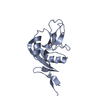 4j6mC  4j6pC  4j6qC  4g96S S: Starting model for refinement C: citing same article ( |
|---|---|
| Similar structure data |
- Links
Links
- Assembly
Assembly
| Deposited unit | 
| ||||||||
|---|---|---|---|---|---|---|---|---|---|
| 1 | 
| ||||||||
| 2 | 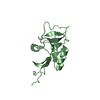
| ||||||||
| Unit cell |
|
- Components
Components
| #1: Protein | Mass: 16164.986 Da / Num. of mol.: 2 Fragment: Soluble head domain of the B-cell receptor CD23 (UNP Residues 156-298) Source method: isolated from a genetically manipulated source Source: (gene. exp.)  Homo sapiens (human) / Gene: CD23A, CLEC4J, FCE2, FCER2, IGEBF / Production host: Homo sapiens (human) / Gene: CD23A, CLEC4J, FCE2, FCER2, IGEBF / Production host:  Has protein modification | Y | |
|---|
-Experimental details
-Experiment
| Experiment | Method:  X-RAY DIFFRACTION / Number of used crystals: 1 X-RAY DIFFRACTION / Number of used crystals: 1 |
|---|
- Sample preparation
Sample preparation
| Crystal | Density Matthews: 2.07 Å3/Da / Density % sol: 40.61 % |
|---|---|
| Crystal grow | Temperature: 298 K / Method: vapor diffusion, sitting drop / pH: 4.25 Details: 30 % (w/v) PEG 1,500 and 0.1 M Malic acid: MES: Tris (MMT) buffer pH 4.25, VAPOR DIFFUSION, SITTING DROP, temperature 298K |
-Data collection
| Diffraction | Mean temperature: 100 K |
|---|---|
| Diffraction source | Source:  SYNCHROTRON / Site: SYNCHROTRON / Site:  Diamond Diamond  / Beamline: I02 / Wavelength: 0.9795 Å / Beamline: I02 / Wavelength: 0.9795 Å |
| Detector | Type: PSI PILATUS 6M / Detector: PIXEL / Date: Dec 10, 2010 |
| Radiation | Protocol: SINGLE WAVELENGTH / Monochromatic (M) / Laue (L): M / Scattering type: x-ray |
| Radiation wavelength | Wavelength: 0.9795 Å / Relative weight: 1 |
| Reflection | Resolution: 2.85→50 Å / Num. all: 6664 / Num. obs: 6640 / % possible obs: 99.9 % / Observed criterion σ(F): 0 / Observed criterion σ(I): 0 |
| Reflection shell | Resolution: 2.85→3 Å / Redundancy: 14.1 % / Rmerge(I) obs: 0.352 / Mean I/σ(I) obs: 1.9 / % possible all: 99.9 |
-Phasing
| Phasing | Method:  molecular replacement molecular replacement |
|---|
- Processing
Processing
| Software |
| ||||||||||||||||||||||||||||||||||||||||||||||||||||||||||||||||||||||||||||||||||||||||||||||||||||||||||||
|---|---|---|---|---|---|---|---|---|---|---|---|---|---|---|---|---|---|---|---|---|---|---|---|---|---|---|---|---|---|---|---|---|---|---|---|---|---|---|---|---|---|---|---|---|---|---|---|---|---|---|---|---|---|---|---|---|---|---|---|---|---|---|---|---|---|---|---|---|---|---|---|---|---|---|---|---|---|---|---|---|---|---|---|---|---|---|---|---|---|---|---|---|---|---|---|---|---|---|---|---|---|---|---|---|---|---|---|---|---|
| Refinement | Method to determine structure:  MOLECULAR REPLACEMENT MOLECULAR REPLACEMENTStarting model: PDB ENTRY 4G96 Resolution: 2.85→48.25 Å / Cor.coef. Fo:Fc: 0.7894 / Cor.coef. Fo:Fc free: 0.6767 / Occupancy max: 1 / Occupancy min: 0.5 / Cross valid method: THROUGHOUT / σ(F): 0 / Stereochemistry target values: Engh & Huber
| ||||||||||||||||||||||||||||||||||||||||||||||||||||||||||||||||||||||||||||||||||||||||||||||||||||||||||||
| Displacement parameters | Biso max: 201.03 Å2 / Biso mean: 55.2431 Å2 / Biso min: 12.11 Å2
| ||||||||||||||||||||||||||||||||||||||||||||||||||||||||||||||||||||||||||||||||||||||||||||||||||||||||||||
| Refine analyze | Luzzati coordinate error obs: 0.517 Å | ||||||||||||||||||||||||||||||||||||||||||||||||||||||||||||||||||||||||||||||||||||||||||||||||||||||||||||
| Refinement step | Cycle: LAST / Resolution: 2.85→48.25 Å
| ||||||||||||||||||||||||||||||||||||||||||||||||||||||||||||||||||||||||||||||||||||||||||||||||||||||||||||
| Refine LS restraints |
| ||||||||||||||||||||||||||||||||||||||||||||||||||||||||||||||||||||||||||||||||||||||||||||||||||||||||||||
| LS refinement shell | Resolution: 2.85→3.19 Å / Total num. of bins used: 5
| ||||||||||||||||||||||||||||||||||||||||||||||||||||||||||||||||||||||||||||||||||||||||||||||||||||||||||||
| Refinement TLS params. | Method: refined / Refine-ID: X-RAY DIFFRACTION
| ||||||||||||||||||||||||||||||||||||||||||||||||||||||||||||||||||||||||||||||||||||||||||||||||||||||||||||
| Refinement TLS group |
|
 Movie
Movie Controller
Controller


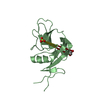
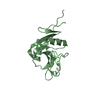
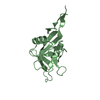


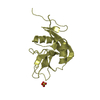

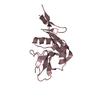

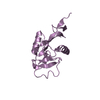
 PDBj
PDBj







